Our brain processes visual information at an incredibly high speed. According to one estimate, it's 60,000 times faster than text.
For example, you're walking in the woods and see a bear. Your heart starts pounding, and you may even start running long before your brain expresses this reaction in words.
Visual images are a natural and essential source of information for almost all living things on Earth with vision. Communication between people through text has only existed for a few thousand years. Therefore, visual content seems more natural and intuitively understandable to us.
The so-called multimedia principle, asserting that people better comprehend information consisting of text and graphics than text alone, has become one of the most established principles in educational fields. This is one of the reasons why visual content so effectively helps marketers achieve their goals.
Learn how to simplify your practice workflow and free up more time for patients with Medesk.
Open the detailed description >>If you want to increase the recognition of your clinic, educate, and retain your patients, visual content will be indispensable for you.
Why is Health Data Visualization Important?
Visualization of data in healthcare, including Telehealth in Health Care, helps draw attention to important aspects of patient health maintenance.
- Disease prevention
- Behaviour during pandemics
- First aid
- Patient rights and responsibilities
- Hotline numbers, and so on.
Graphic design, based on principles of balance, rhythm, contrast, pattern, unity, and emphasis, ensures the understanding and engagement of patients. The arrangement of objects on posters and infographics, colour combinations, hierarchy, and even empty space can either help convey the main idea or hide it from view. Therefore, understanding the principles of information design and data visualization is an important condition for successful internal communication with patients and colleagues.
Visual communication emerges as a powerful tool, simplifying complex medical concepts and enhancing the patient experience. The use of visual messages helps reach even low-literacy segments of the population.
Let's explore some compelling examples of visual health communication and the software solutions that facilitate their creation.
Medesk helps automate scheduling and record-keeping, allowing you to recreate an individual approach to each patient, providing them with maximum attention.
Learn more >>Example 1: Infographics for Disease Awareness Campaigns
Infographics serve as impactful mediums for conveying essential health information to the public. Software such as Canva or Canva alternatives like Piktochart, and Adobe Illustrator provides user-friendly interfaces and customizable templates for designing visually engaging infographics. These platforms offer a lot of design elements, icons, and fonts to create compelling visuals that capture attention and convey key messages effectively.
Here is an example of a coronavirus awareness poster created with Canva:
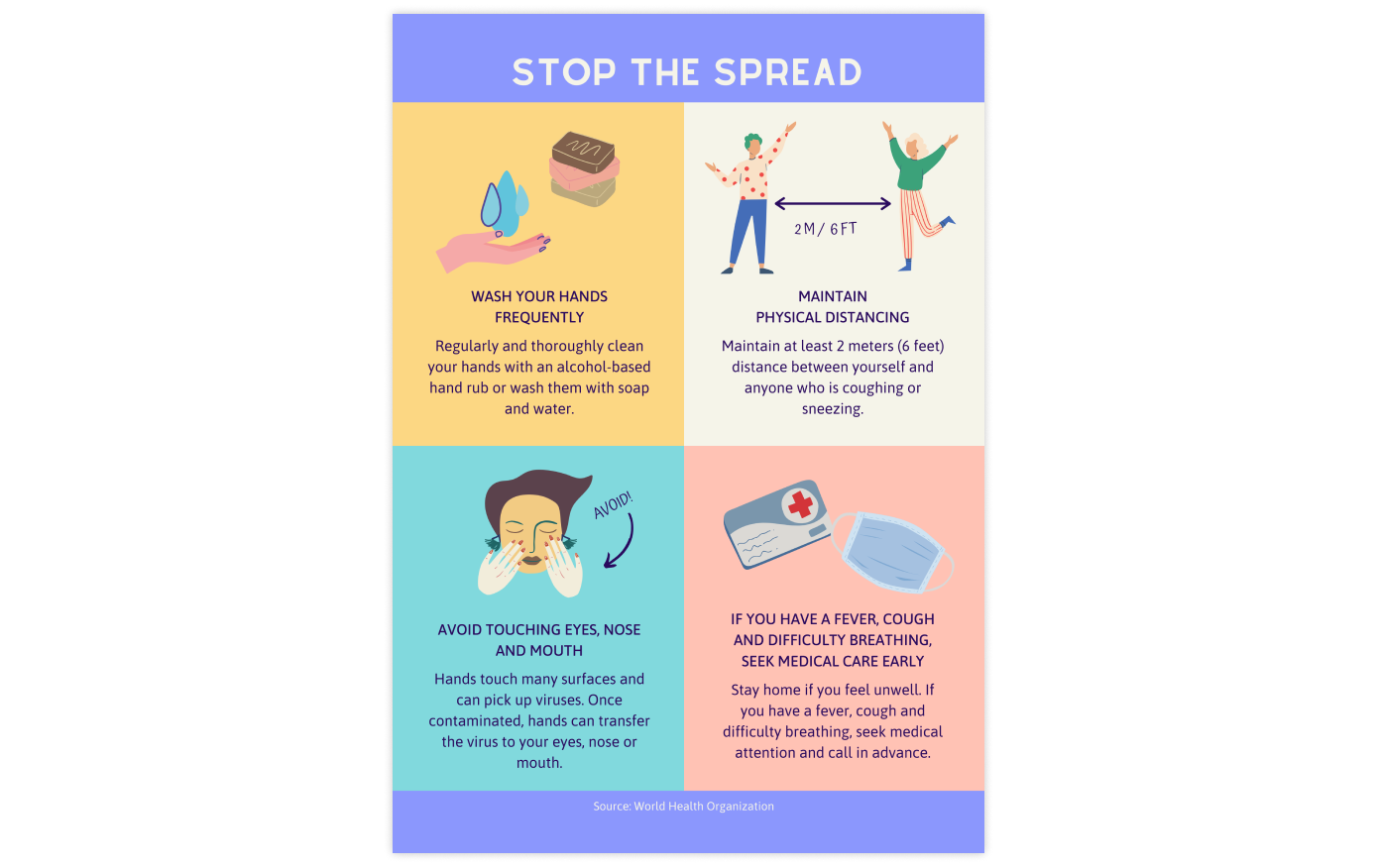
The CDC website features a public health image library, where you can find visual elements for your designs.
Example 2: Anatomical Models for Patient Education
In order for a patient to understand the importance of treatment, he must comprehend what is happening in his body. A conscious patient will actively participate in his own healing process, avoid asking irrelevant questions, and facilitate recovery and thoughtful decision-making.
The most effective way is to show the person what is happening inside. With anatomical modelling software such as Visible Body, Complete Anatomy, and ZygoteBody, a doctor can create interactive 3D models of anatomical structures for patient education.
These platforms offer detailed anatomical renderings, interactive features, and customizable views to visualize complex information.
For example, in the Complete Anatomy app, you can interactively demonstrate muscle movements to the patient and explain what happens to them during stretching and why rest is important for recovery.
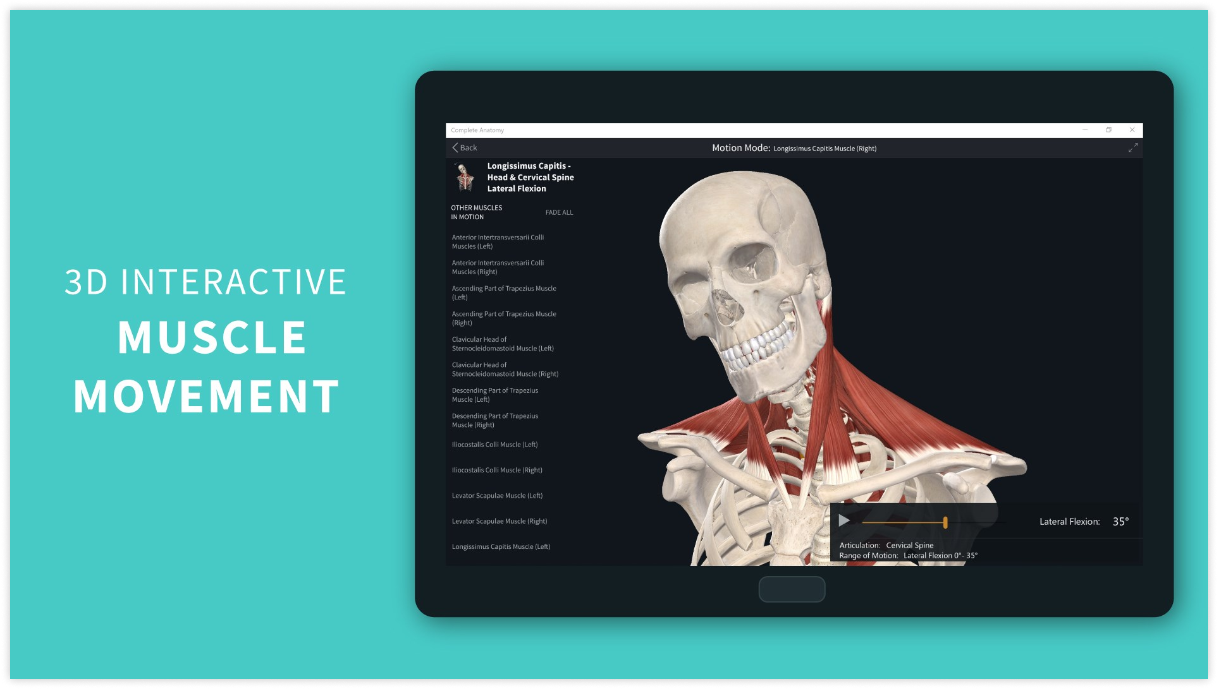
ZygoteBody is a website with a model of the human body. Using a slider, you can display the human body "layer by layer," from the nervous system and brain to bones, muscles, and internal organs.
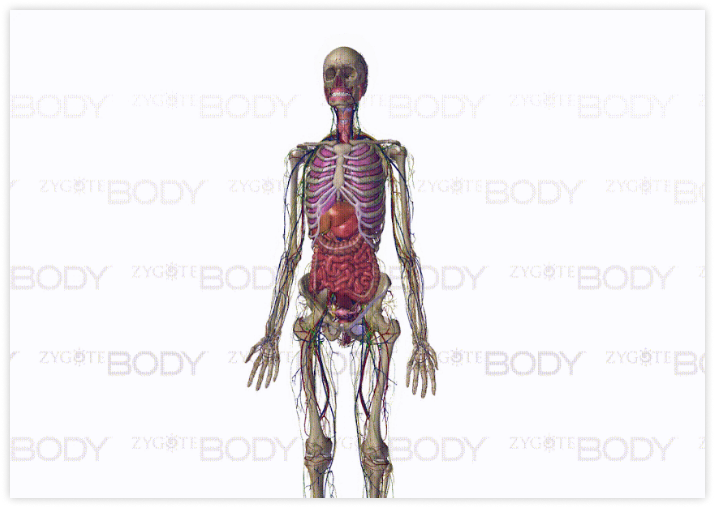
Doctors use medical illustration software, such as BioDigital Human, to create detailed illustrations and diagrams for surgical consultations.
The programmes offer:
- Drawing tools
- Layering capabilities
- 3D modelling features.
With these tools, professionals visualize anatomical structures, surgical procedures, and treatment plans. Images are used for patient consultations, discussing issues related to the course and progress of treatment.
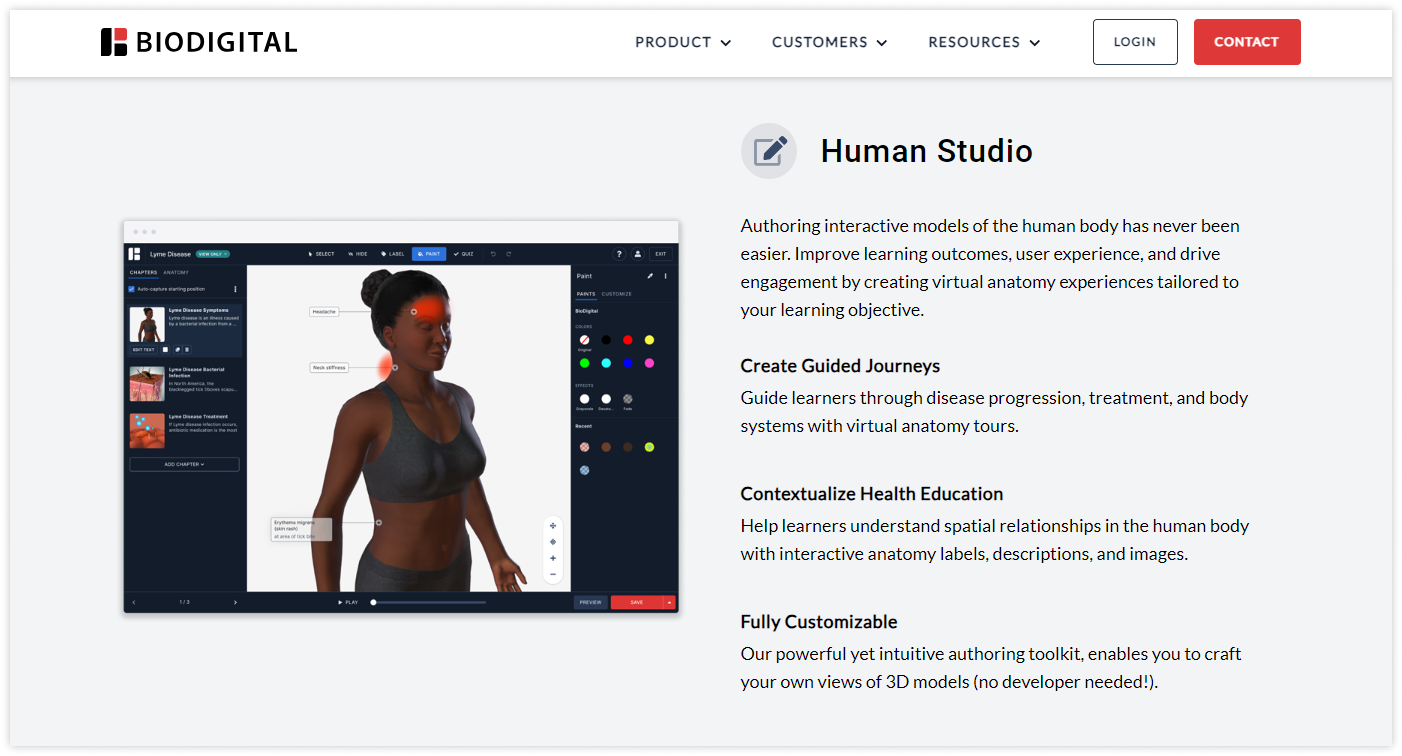
The main message of such communication is the understanding of one's own body and its internal processes.
Example 3: Interactive Digital Screens in Waiting Areas
Digital signage software such as NoviSign, ScreenCloud, and Enplug is used to visualize information on digital screens in waiting areas and patient lounges. These platforms offer intuitive content management systems, pre-designed templates, and multimedia integration capabilities for creating dynamic and informative displays.
Healthcare institutions utilize digital signage to deliver health tips, appointment reminders, and educational videos, enhancing health literacy.
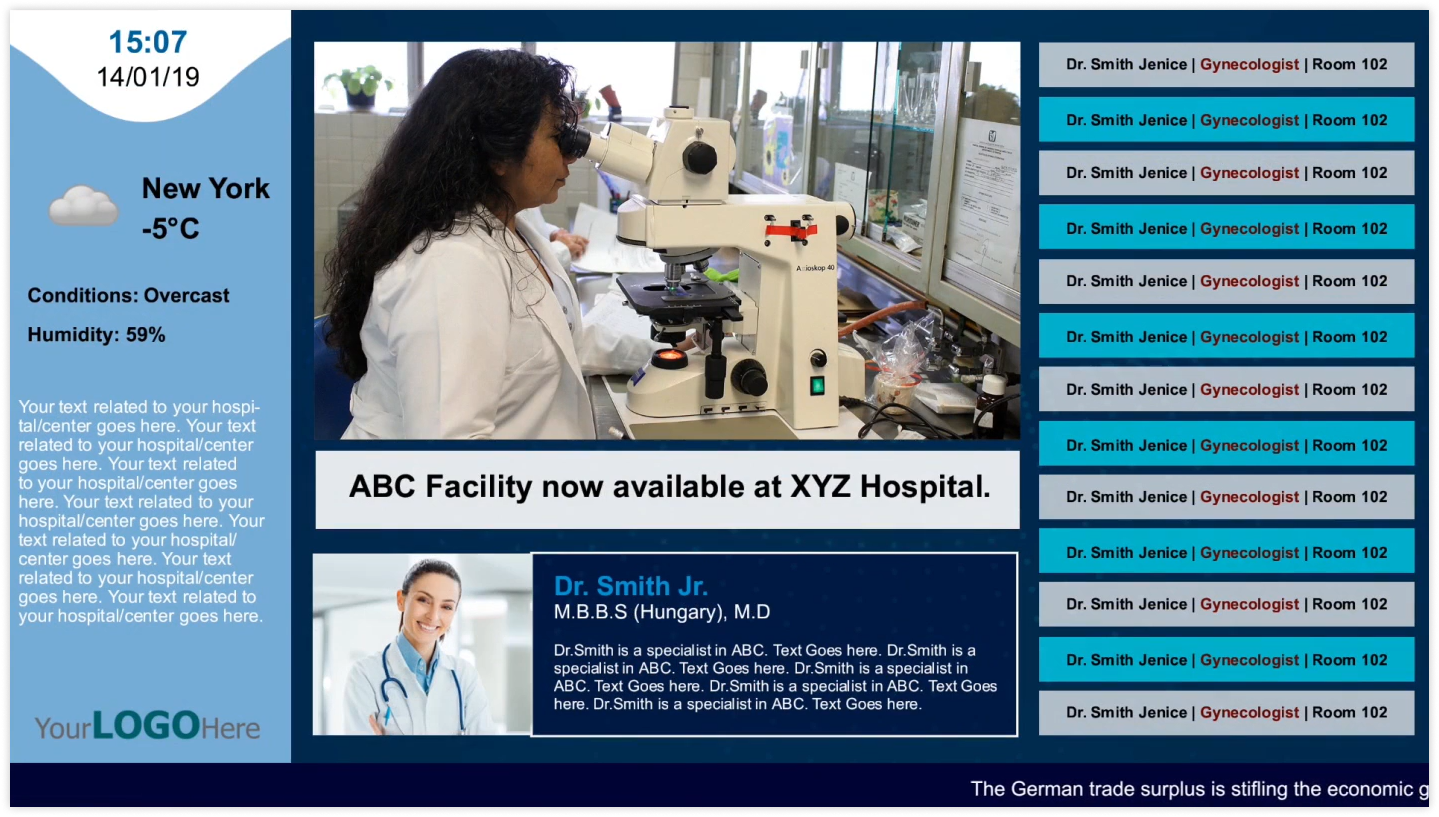
For instance, ScreenCloud supports 80+ free apps, including social media feeds. You can display content from social networks on screens, promoting your brand and increasing engagement.
Example 4: Visual Charts for Medication Adherence
For diabetics, patients with hypothyroidism, and patients with hormonal disorders, taking medication daily is part of life. Skipping pills can lead to worsening conditions and disruptions in treatment regimens. For such patients, visual reminders from medication management apps serve as personal assistants. Here, a background remover can be used to create clear, distraction-free images of medications or instructions, making visual cues more effective and easier to understand.
Discover more about the essential features of Medesk and claim your free access today!
Explore now >>Medication management software such as Medisafe, Mango Health, and MyTherapy helps track medication adherence and provide personalized reminders using visual charts and calendars. These applications offer user-friendly interfaces, medication databases, and adherence reports to assist patients in managing their medication regimens effectively.
For instance, with MyTherapy, a patient can visualize patterns within their health and recognize which part of their treatment needs improvement.
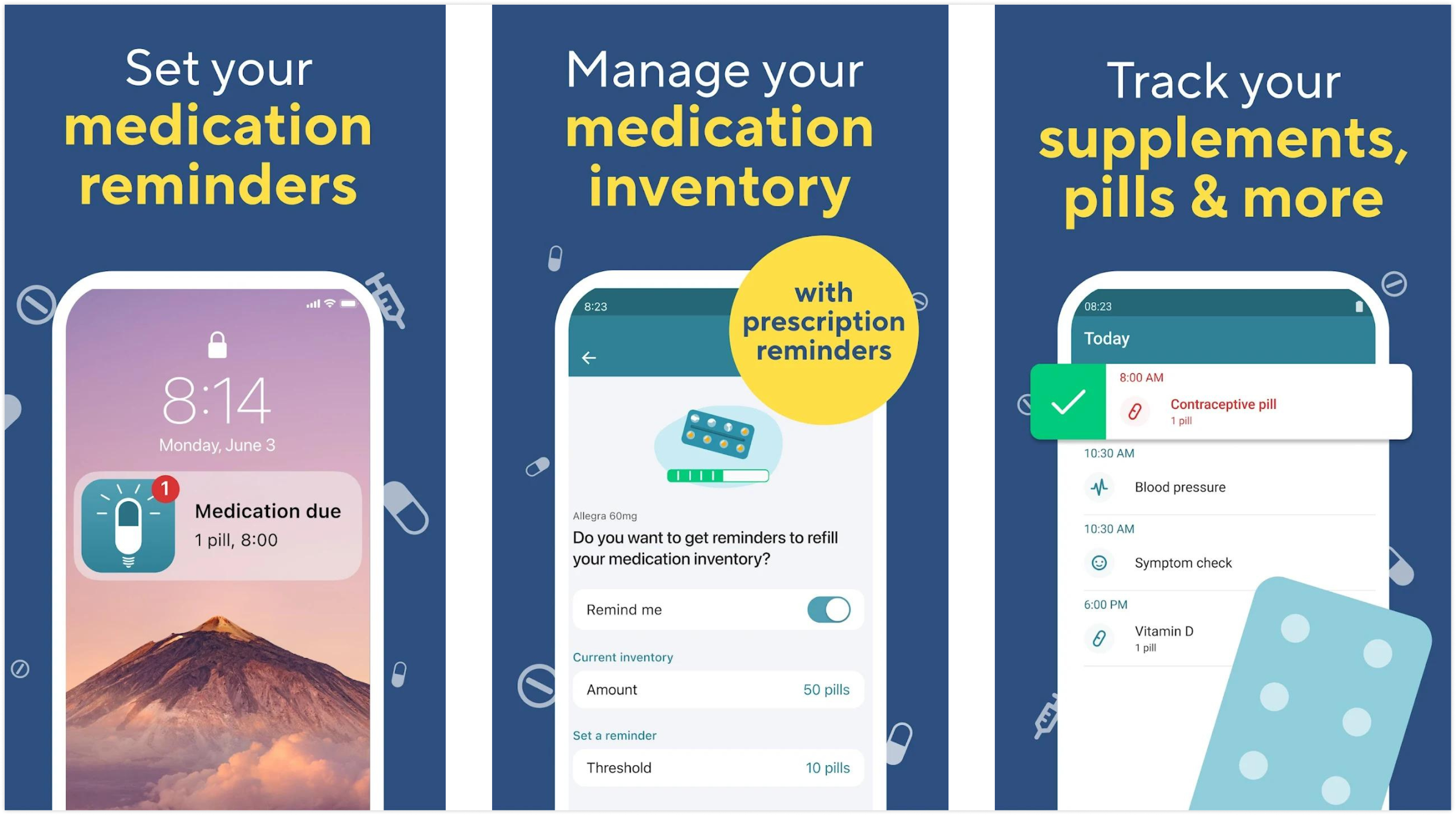
Example 5: Interactive Anatomy Apps for Medical Training
Effective visual communication develops practical skills for future doctors. Interactive anatomy software such as Complete Anatomy, Essential Anatomy, and Human Anatomy Atlas not only helps obtain 3D visualization of the human body but also allows the creation of educational materials and interactive quizzes.
Medical training with such tools is practically oriented and becomes engaging, interactive, and accessible across diverse learning environments.
For example, the Human Anatomy Atlas contains not only body models but also a search system, through which students can search by topic and region.
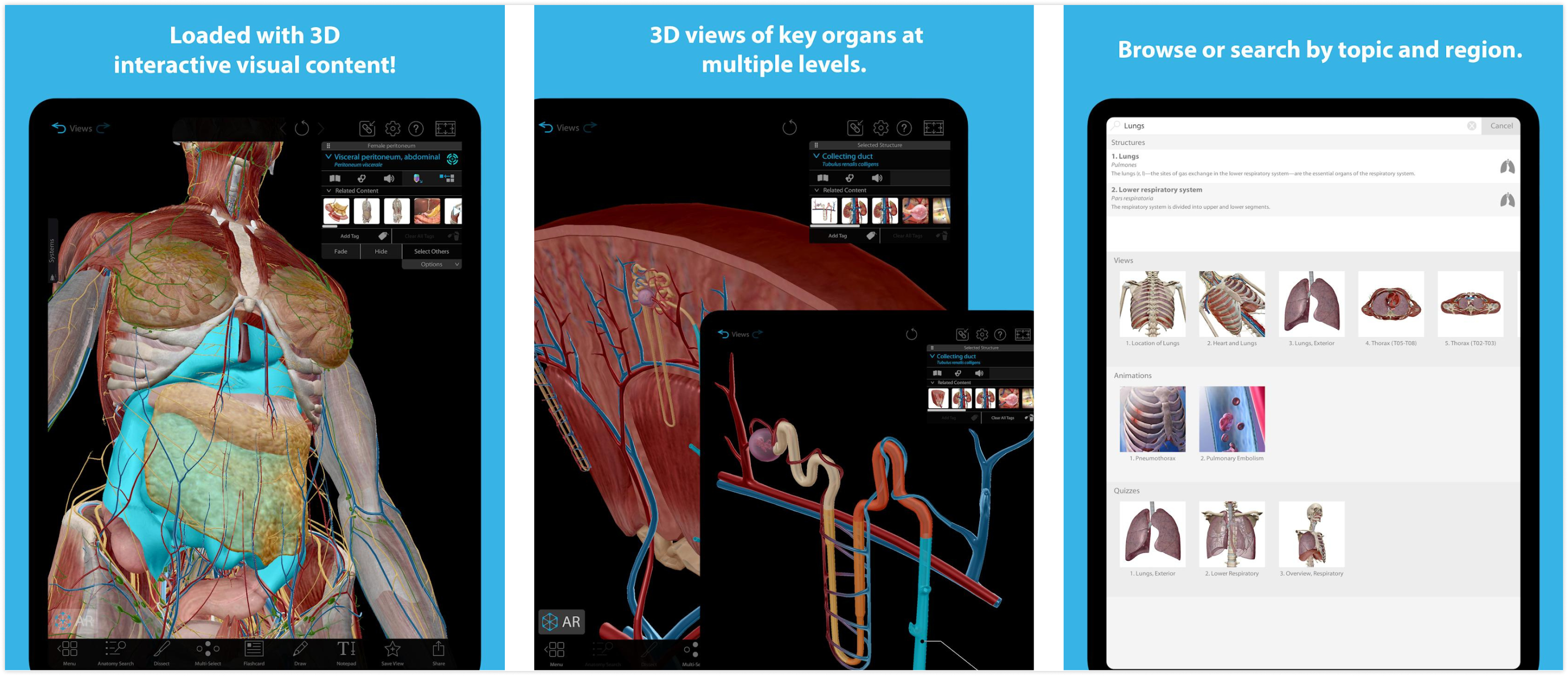
Example 6: Patient Education Videos for Chronic Disease Management and Preventive Care
The video format has become very popular lately. A study shows that adults in the United States spend an average of 45.8 hours per month on TikTok. Video editing software such as Adobe Premiere Pro, Final Cut Pro, Renderforest, and Camtasia can be used to incorporate short video formats for educational purposes.
In addition, built-in editors within applications like TikTok, YouTube Shorts, and Instagram reels offer a multitude of tools for video editing, sufficient for simple editing and montage.
Professional tools offer advanced editing capabilities, visual effects, and animation features to produce informative and engaging video content. Utilize social proof, patient testimonials, real-life cases, and colleagues' opinions to inspire and empower patients to take an active role in managing their health.
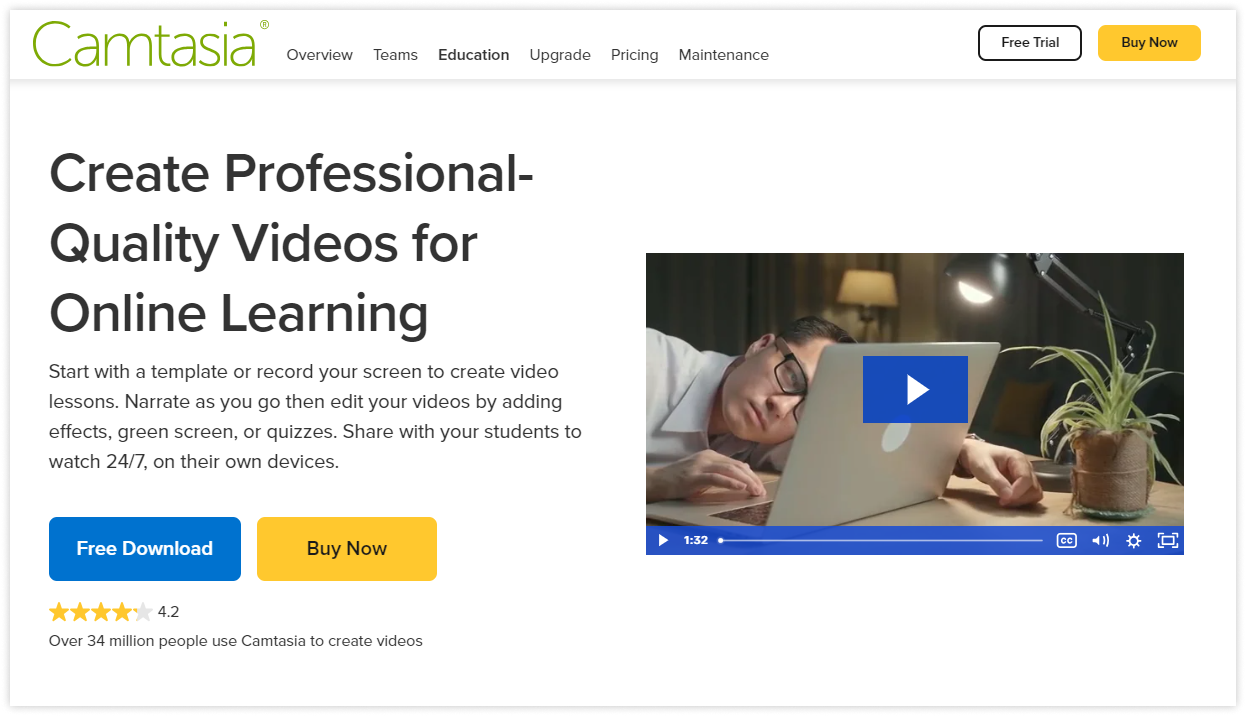
Example 7: Remote Monitoring and Telemedicine
Visual representation is utilized in remote monitoring and telemedicine in various ways.
Remote consultations allow for real-time communication and diagnosis. Through video conferencing tools like Zoom, Skype for Business, and Medesk Meet, healthcare professionals can conduct virtual appointments, discuss symptoms, and prescribe medications without the need for in-person visits.
In Medesk Meet, patients receive reminders about their online appointment with a link to enter the conference, as well as detailed instructions on how to use the application.
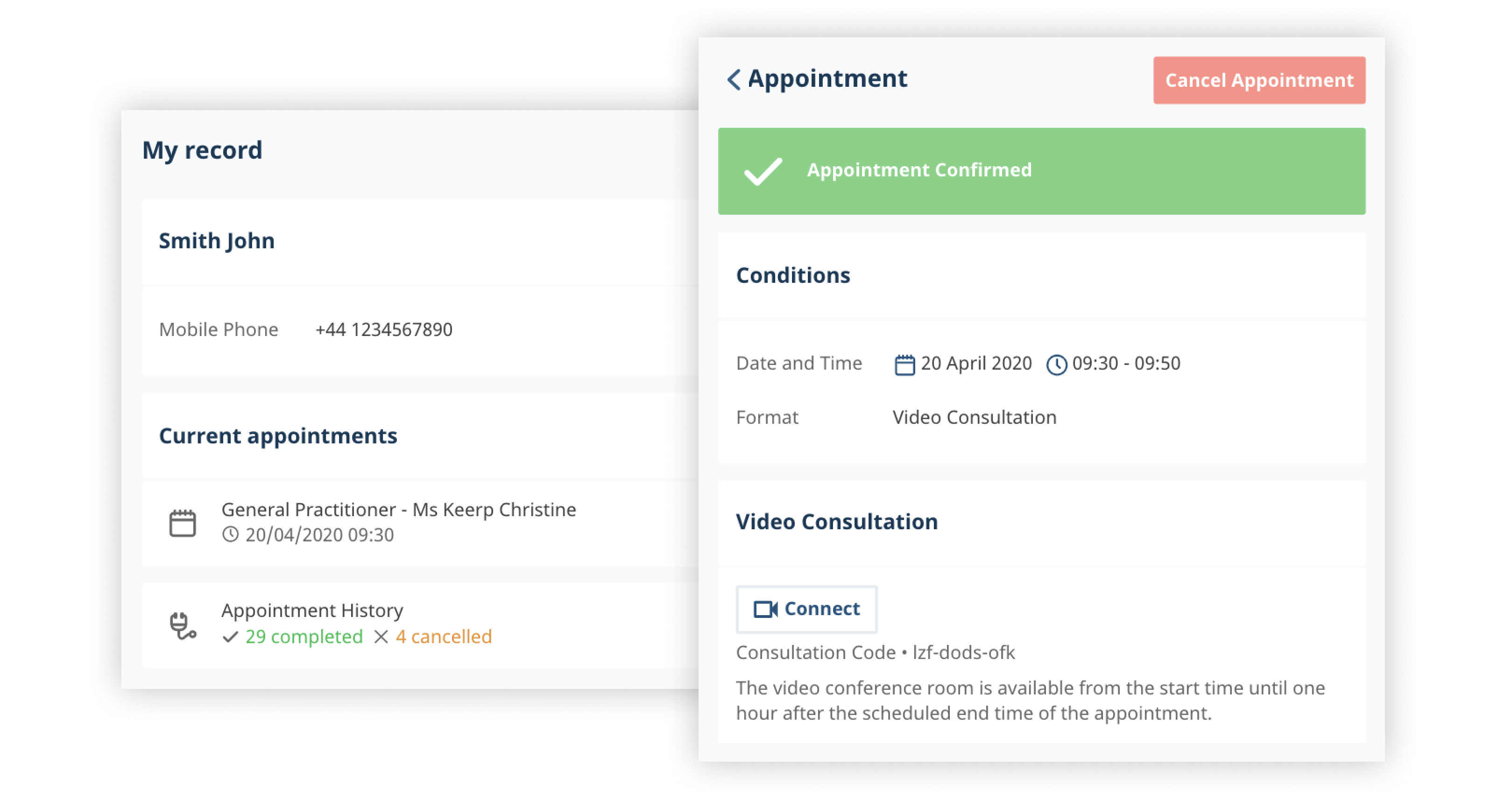
Using the screen demonstration feature, the consultation is accompanied by a visual display: treatment plans, medication schedules, and 3D models can be shown on the screen.
With remote monitoring devices such as wearable sensors and smartphone apps, patients can transmit data on blood pressure, heart rate, glucose levels, and activity levels to their healthcare providers in real-time. Here are examples of software for patient remote monitoring:
- Medtronic CareLink
- Biotricity Bioflux
- Vivify Health.
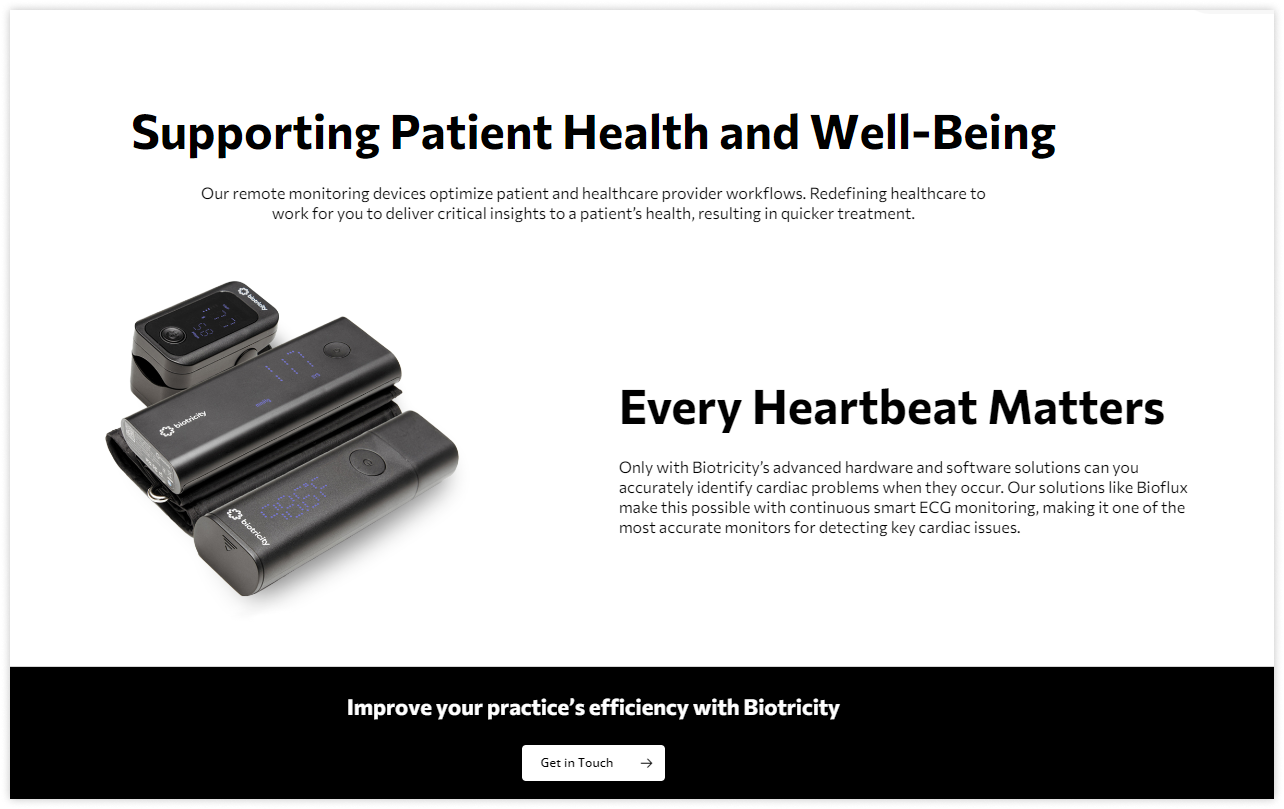
Data is visualized using graphs, tables, and reports, allowing monitoring of the patient's condition throughout the entire treatment.
Final Bonus
We hope our use cases will help you build an effective data visualization system. We have also compiled a selection of articles on communication in healthcare that you may find interesting.
See you in our cozy blog. Here, we review products, write about innovations in digital health, and share our case studies.


